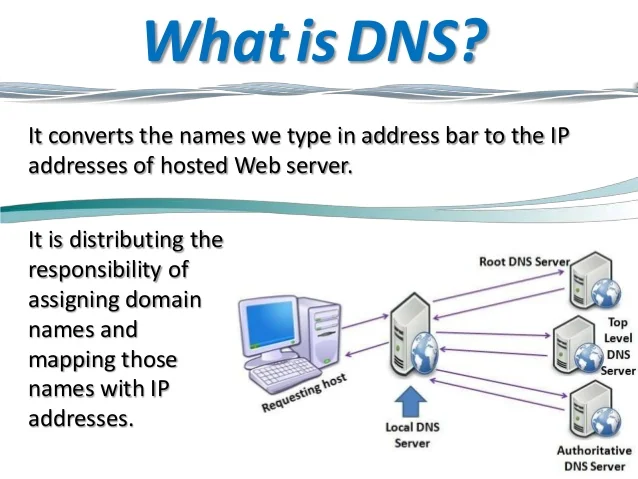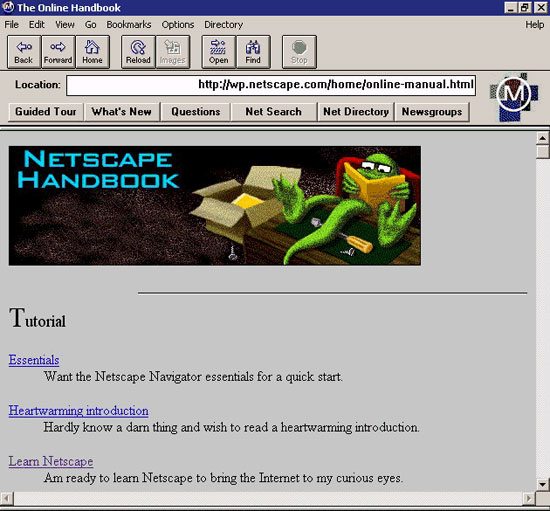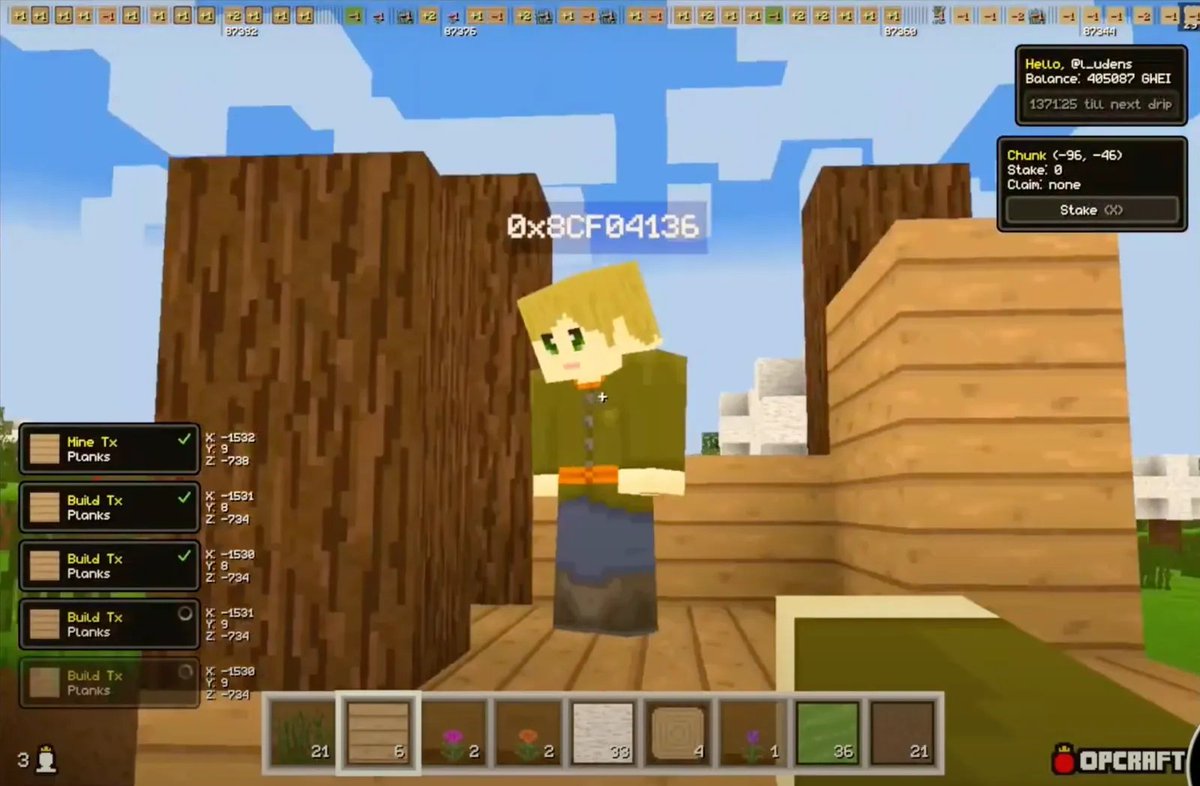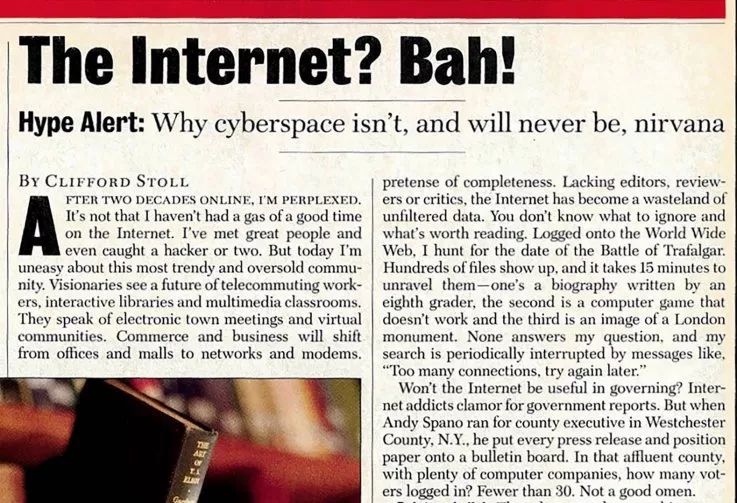5 billion people use the internet.
Less than 1% understand it.
This mega thread will get you up to speed—starting today:
Less than 1% understand it.
This mega thread will get you up to speed—starting today:
1/47 The internet begins in the 1960s as a US government response to the Cold War.
Military leaders are concerned about potential attacks on US communication systems.
And the govt funds the development of a network of computers that can talk to one another—the Arpanet.
Military leaders are concerned about potential attacks on US communication systems.
And the govt funds the development of a network of computers that can talk to one another—the Arpanet.

2/47 ARPANET
On October 29, 1969, ARPAnet delivers its first message.
The first computer is located in a research lab at UCLA, the second is at Stanford.
By the end of 1969, four computers are connected to the ARPAnet.
On October 29, 1969, ARPAnet delivers its first message.
The first computer is located in a research lab at UCLA, the second is at Stanford.
By the end of 1969, four computers are connected to the ARPAnet.

4/47 EMAIL
In 1971, computer programmer Ray Tomlinson implements the first email program on the ARPANET system.
He uses the @ sign to separate the username from the name of their machine.
This scheme has been used in email addresses ever since.
In 1971, computer programmer Ray Tomlinson implements the first email program on the ARPANET system.
He uses the @ sign to separate the username from the name of their machine.
This scheme has been used in email addresses ever since.

5/47 The beginning of TCP/IP
In 1974, a proposal is made to link Arpa-like networks together into an “inter-network.”
It would have no central control and would work around a transmission control protocol.
This eventually becomes TCP/IP.
In 1974, a proposal is made to link Arpa-like networks together into an “inter-network.”
It would have no central control and would work around a transmission control protocol.
This eventually becomes TCP/IP.

6/47 What is TCP/IP?
Transmission Control Protocol-Internet Protocol
A protocol which will work on any sort of computer and operating system for transportation of data across the internet between different systems.
It is the foundation protocol of the entire internet.
Transmission Control Protocol-Internet Protocol
A protocol which will work on any sort of computer and operating system for transportation of data across the internet between different systems.
It is the foundation protocol of the entire internet.

7/47 MUD - multi-user dungeon games
In 1979, MUD, a precursor to World of Warcraft and Second Life is developed.
MUDs are entirely text-based virtual worlds, combining elements of role-playing games, interactive, fiction, and online chat.
In 1979, MUD, a precursor to World of Warcraft and Second Life is developed.
MUDs are entirely text-based virtual worlds, combining elements of role-playing games, interactive, fiction, and online chat.

8/47 Domain Name System (DNS)
In 1984, the domain name system is created.
It is the internet’s equivalent of a phone book and converts hard-to-remember IP addresses into simple names.
In 1984, the domain name system is created.
It is the internet’s equivalent of a phone book and converts hard-to-remember IP addresses into simple names.

9/47 The Internet Grows
By 1987, there are nearly 30,000 hosts on the Internet.
The original Arpanet protocol is limited to 1,000 hosts.
But the adoption of the TCP/IP standard makes larger numbers of hosts possible.
By 1987, there are nearly 30,000 hosts on the Internet.
The original Arpanet protocol is limited to 1,000 hosts.
But the adoption of the TCP/IP standard makes larger numbers of hosts possible.
10/47 America Online
In 1989, when Apple pulls out of the AppleLink program, the project is renamed America Online.
In the 1990s, AOL leads the way in making the Internet popular with average users.
In 1989, when Apple pulls out of the AppleLink program, the project is renamed America Online.
In the 1990s, AOL leads the way in making the Internet popular with average users.

11/47 WEB1
1990 brings the World Wide Web.
It's an application layer that runs on top of the internet, helping to make it more functional.
The code for the World Wide Web is written by Tim Berners-Lee along with the standards for HTML, HTTP, and URLs.
1990 brings the World Wide Web.
It's an application layer that runs on top of the internet, helping to make it more functional.
The code for the World Wide Web is written by Tim Berners-Lee along with the standards for HTML, HTTP, and URLs.

12/47 First Web Page
In 1991, the first web page is created.
Its purpose, to explain what the World Wide Web is. :))
In 1991, the first web page is created.
Its purpose, to explain what the World Wide Web is. :))

13/47 First Content-Based Search Protocol
Also in 1991, the first search protocol that examines file contents instead of just file names is launched.
Like HTTP, it's an application layer protocol run on top of TCP/IP (the internet).
It's called Gopher.
Also in 1991, the first search protocol that examines file contents instead of just file names is launched.
Like HTTP, it's an application layer protocol run on top of TCP/IP (the internet).
It's called Gopher.

14/47 First Webcam
In 1991, the first webcam is deployed at a Cambridge University computer lab.
Its sole purpose is to monitor a particular coffee maker so that lab users could avoid wasted trips to an empty coffee pot.
In 1991, the first webcam is deployed at a Cambridge University computer lab.
Its sole purpose is to monitor a particular coffee maker so that lab users could avoid wasted trips to an empty coffee pot.

15/47 MOSAIC
In 1993, the first widely downloaded Internet browser, Mosaic, is released by NCSA at University of Illinois.
It is funded by the Gore Act and designed by @pmarca and Eric Bina.
It is the first browser to make the Internet easily accessible to non-techies.
In 1993, the first widely downloaded Internet browser, Mosaic, is released by NCSA at University of Illinois.
It is funded by the Gore Act and designed by @pmarca and Eric Bina.
It is the first browser to make the Internet easily accessible to non-techies.

16/47 NETSCAPE NAVIGATOR
In 1994, another @pmarca browser, Netscape Navigator is released.
Netscape IPOs in 1995.
In 1999, Netscape is acquired for $4.3 billion by AOL.
The internet is big business.
In 1994, another @pmarca browser, Netscape Navigator is released.
Netscape IPOs in 1995.
In 1999, Netscape is acquired for $4.3 billion by AOL.
The internet is big business.

17/47 Commercialization
1995 is the year the web becomes commercialized.
SSL (Secure Sockets Layer) encryption is developed by Netscape, making it safer for credit card payments online.
And Amazon and eBay are started.
1995 is the year the web becomes commercialized.
SSL (Secure Sockets Layer) encryption is developed by Netscape, making it safer for credit card payments online.
And Amazon and eBay are started.

18/47 Firsts at EBAY and AMAZON
A broken laser pointer for $14.83 was the first ever item to be sold on eBay.
The first book to be sold on Amazon was Douglas Hofstadter’s “Fluid Concepts and Creative Analogies: Computer Models of the Fundamental Mechanisms of Thought”

A broken laser pointer for $14.83 was the first ever item to be sold on eBay.
The first book to be sold on Amazon was Douglas Hofstadter’s “Fluid Concepts and Creative Analogies: Computer Models of the Fundamental Mechanisms of Thought”


20/47 GOOGLE!
In 1998, the Google search engine goes live.
It revolutionizes the way people find information online.
[And establishes the beginnings of a massive, global surveillance operation that continues today.]
In 1998, the Google search engine goes live.
It revolutionizes the way people find information online.
[And establishes the beginnings of a massive, global surveillance operation that continues today.]

21/47 WIKIPEDIA
In 2001, Wikipedia launches.
Initially regarded as an unreliable source, it goes on to become one of the truly great accomplishments of the internet.
Paving the way for collective web content generation and the democratization of information.
In 2001, Wikipedia launches.
Initially regarded as an unreliable source, it goes on to become one of the truly great accomplishments of the internet.
Paving the way for collective web content generation and the democratization of information.

22/47 GMAIL
In 2004, Gmail launches.
By offering one gigabyte of storage space, significantly more than competitors at the time, it's quickly positioned to own the email game.
And it goes on to become the most used email service around the globe.
In 2004, Gmail launches.
By offering one gigabyte of storage space, significantly more than competitors at the time, it's quickly positioned to own the email game.
And it goes on to become the most used email service around the globe.

23/47 Web 2
Web2 refers to websites that are highly interactive and user-driven that emerge around 2004.
Users can publish articles and comments, create accounts on different sites, create personal profiles, connect with other users and more.
Web2 refers to websites that are highly interactive and user-driven that emerge around 2004.
Users can publish articles and comments, create accounts on different sites, create personal profiles, connect with other users and more.
24/47 Moving from Web1 to Web2
At the time, it seems a good thing. The user experience is dramatically transformed.
At the time, it seems a good thing. The user experience is dramatically transformed.

25/47 But in retrospect, it's a dangerous step.
The tech giants co-opt the free protocols of web1 to build centralized platforms that own our data and identities.
The tech giants co-opt the free protocols of web1 to build centralized platforms that own our data and identities.
26/47 FACEBOOK
Facebook launches in 2004, though at the time it was only open to college students and was called “The Facebook.”
Facebook launches in 2004, though at the time it was only open to college students and was called “The Facebook.”

27/47 YOUTUBE
YouTube launches in 2005, bringing free online video hosting and sharing to the masses.
Here is the first YouTube video:
YouTube launches in 2005, bringing free online video hosting and sharing to the masses.
Here is the first YouTube video:
28/47 TWITTER
Twitter launches in 2006.
It was originally going to be called twittr (inspired by Flickr).
Here is the first tweet:
Twitter launches in 2006.
It was originally going to be called twittr (inspired by Flickr).
Here is the first tweet:

29/47 The iPHONE and the Mobile Web
2007 brings the single most consequential web2 innovation, Apple's iPhone.
With it comes an explosion of activity in mobile web applications and design.
And it takes the web truly mobile.
2007 brings the single most consequential web2 innovation, Apple's iPhone.
With it comes an explosion of activity in mobile web applications and design.
And it takes the web truly mobile.

30/47 The beginnings of Web3
In 2008, Satoshi Nakamoto publishes Bitcoin: A Peer-to-Peer Electronic Cash System
It is a response to the economic collapse triggered by investment banks.
bitcoinwhitepaper.co
In 2008, Satoshi Nakamoto publishes Bitcoin: A Peer-to-Peer Electronic Cash System
It is a response to the economic collapse triggered by investment banks.
bitcoinwhitepaper.co
31/47
[Threads 'cut off' at 31.
Click 'Show replies' 👇 to keep reading.]
[Threads 'cut off' at 31.
Click 'Show replies' 👇 to keep reading.]
32/47 The first blockchain
In 2009, Bitcoin makes its appearance:
• Jan 3 - the genesis block in the bitcoin blockchain appears
• Jan 12 - brings the first bitcoin transaction
In 2009, Bitcoin makes its appearance:
• Jan 3 - the genesis block in the bitcoin blockchain appears
• Jan 12 - brings the first bitcoin transaction

33/47 COINBASE
In 2012, Coinbase, the first cryptocurrency exchange is founded.
In 2013, it raises $25 million in a Series B round led by a16z.
On April 14, 2021, Coinbase becomes a public company on the Nasdaq via a direct stock listing.
In 2012, Coinbase, the first cryptocurrency exchange is founded.
In 2013, it raises $25 million in a Series B round led by a16z.
On April 14, 2021, Coinbase becomes a public company on the Nasdaq via a direct stock listing.

34/47 ETHEREUM
In 2015, Ethereum, the second major blockchain launches.
Ethereum is a decentralized open source blockchain with smart contract functionality.
In 2015, Ethereum, the second major blockchain launches.
Ethereum is a decentralized open source blockchain with smart contract functionality.

35/47 Web3
Since 2020, several new and relentlessly improving blockchains and sidechains develop:
SOLANA
POLKADOT
AVALANCHE
NEAR
POLYGON
SUI and more.
They bring a suite of new concepts and protocols that are redefining how the internet (and world) works.
Since 2020, several new and relentlessly improving blockchains and sidechains develop:
SOLANA
POLKADOT
AVALANCHE
NEAR
POLYGON
SUI and more.
They bring a suite of new concepts and protocols that are redefining how the internet (and world) works.
36/47 From Web2 to Web3
Web2 is built on a client-server architecture, with all data concentrated on servers.
The servers belong to specific companies that control users and the internet.
Web2 is built on a client-server architecture, with all data concentrated on servers.
The servers belong to specific companies that control users and the internet.

37/47 Web3 changes all that.
It comprises decentralized protocols that can be used by all parties.
It is not just a shift in technology, but a shift in culture.
And it is redefining how we work and live:
It comprises decentralized protocols that can be used by all parties.
It is not just a shift in technology, but a shift in culture.
And it is redefining how we work and live:

38/47 NFTs - non fungible tokens
An NFT is a digital asset that confers ownership of a virtual good, such as a piece of digital artwork or online collectible.
It allows users to own a piece of the internet.
An NFT is a digital asset that confers ownership of a virtual good, such as a piece of digital artwork or online collectible.
It allows users to own a piece of the internet.

39/47 DAOs - decentralized autonomous organizations
A DAO is an internet-native business that's collectively owned and managed by its members.
They have built-in treasuries and decisions are governed by proposals and voting to ensure everyone in the organization has a voice.
A DAO is an internet-native business that's collectively owned and managed by its members.
They have built-in treasuries and decisions are governed by proposals and voting to ensure everyone in the organization has a voice.

40/47 DeFi - decentralized finance
DeFi removes the control banks and institutions have on money, financial products and services.
DeFi removes the control banks and institutions have on money, financial products and services.

41/47 Decentralized Social Networks
Blockchain-based social networks that are capable of being decentralized and resistant to censorship and undue control.
Users own and control their identity and content and have direct access to their audience.
Blockchain-based social networks that are capable of being decentralized and resistant to censorship and undue control.
Users own and control their identity and content and have direct access to their audience.

42/47 DID - decentralized identifiers
Traditional identifiers like your legal name or email address rely on third parties—governments and email providers.
DIDs are different— they are issued, held, and controlled by the individual.
Traditional identifiers like your legal name or email address rely on third parties—governments and email providers.
DIDs are different— they are issued, held, and controlled by the individual.

43/47 The internet begins as a way to improve communication.
Instead, it transforms society:
1990 to 2004, expansion of information
2005 to 2020, disruption of media
2020 on, disruption of ownership
By 2030, it will redefine every aspect of how we work, do business & live.
Instead, it transforms society:
1990 to 2004, expansion of information
2005 to 2020, disruption of media
2020 on, disruption of ownership
By 2030, it will redefine every aspect of how we work, do business & live.
44/47 Some resources for understanding the internet:
Collected web3 twitter threads of @cdixon
cdixon.mirror.xyz/TNOgrQGh_xUnBV…
Collected web3 twitter threads of @cdixon
cdixon.mirror.xyz/TNOgrQGh_xUnBV…
45/47 How the Internet Happened - from Netscape to the iPhone by @brianmcc
amazon.com/How-Internet-H…
amazon.com/How-Internet-H…
46/47 The Untold Story of the Women Who Made the Internet by Claire Evans
amazon.com/Broad-Band-Unt…
amazon.com/Broad-Band-Unt…
47/47 That's it, folks. Hope this useful.
If you enjoyed it, please share by retweeting the first tweet.
I write about web3 and the future. You can follow me @mishadavinci.
If you enjoyed it, please share by retweeting the first tweet.
I write about web3 and the future. You can follow me @mishadavinci.
https://twitter.com/mishadavinci/status/1551211815358459904
• • •
Missing some Tweet in this thread? You can try to
force a refresh














